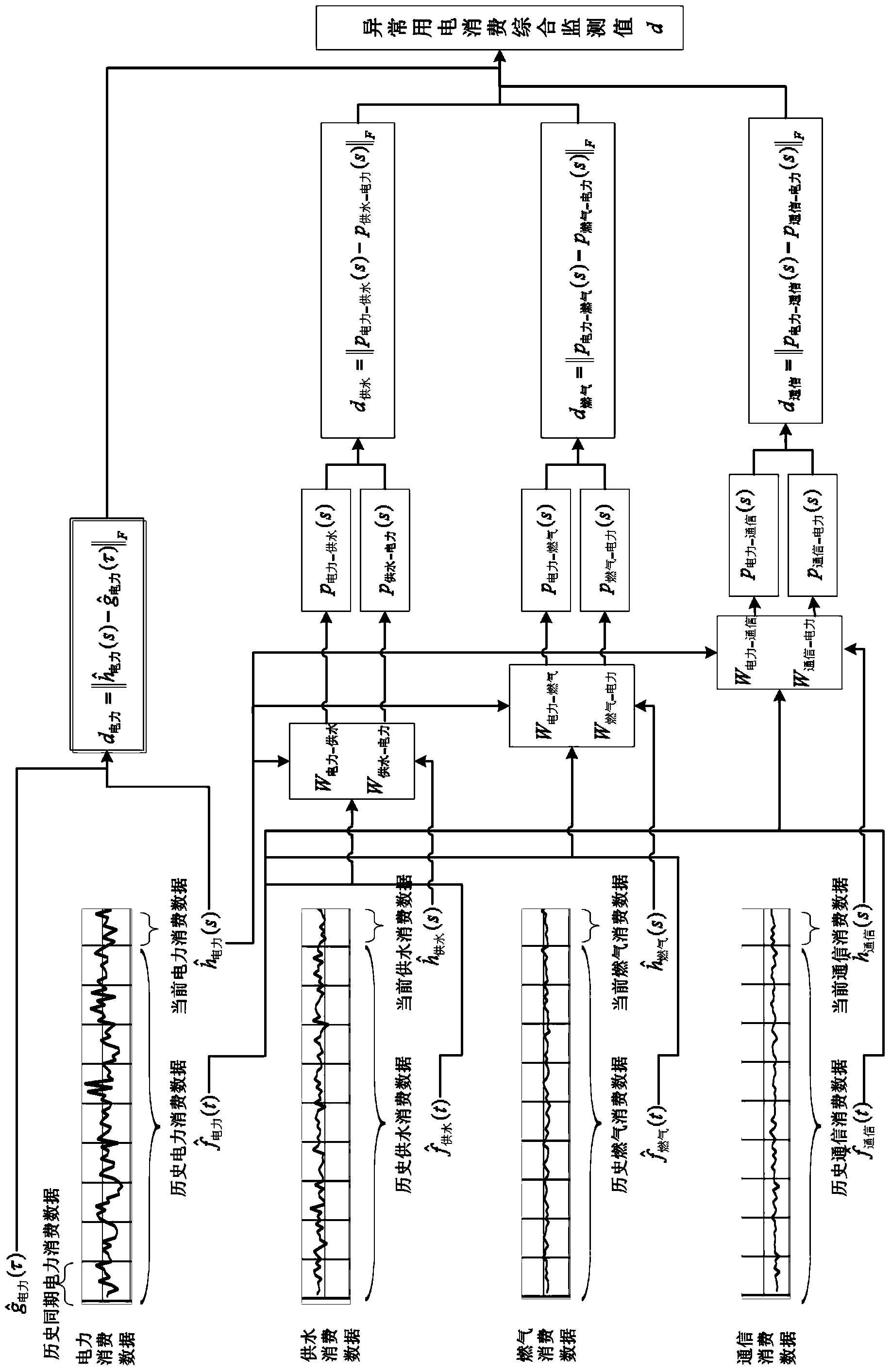Multi-source modeling and collaborative analysis method for electricity stealing behavior
An analysis method and behavioral technology, applied in the field of electricity theft analysis, can solve problems such as misjudgment, consumption model establishment of electricity consumption behavior, short-term fluctuation of power equipment, etc.
- Summary
- Abstract
- Description
- Claims
- Application Information
AI Technical Summary
Problems solved by technology
Method used
Image
Examples
Embodiment Construction
[0066] In this example, if figure 1 and figure 2 As shown, a multi-source modeling and collaborative analysis method for power theft behavior is carried out as follows:
[0067] 1. Get data:
[0068] Taking the current monitoring time as the starting time, obtain the historical data f(t) of the time period t at least 12 months before the starting time to ensure that there is historical data contemporaneous with the current monitoring period. Historical data collection should be as dense and uniform as possible, such as monitoring data is recorded every 30 minutes on average; historical data f(t) includes: historical power consumption data f 电力 (t), historical water supply consumption data f 供水 (t), historical gas consumption data f 燃气 (t) and historical communication consumption data f 通信 (t), and are the known consumer electricity, water supply, gas and communication consumption data in the selected historical time respectively. The power usage value of the look-up met...
PUM
 Login to View More
Login to View More Abstract
Description
Claims
Application Information
 Login to View More
Login to View More - R&D
- Intellectual Property
- Life Sciences
- Materials
- Tech Scout
- Unparalleled Data Quality
- Higher Quality Content
- 60% Fewer Hallucinations
Browse by: Latest US Patents, China's latest patents, Technical Efficacy Thesaurus, Application Domain, Technology Topic, Popular Technical Reports.
© 2025 PatSnap. All rights reserved.Legal|Privacy policy|Modern Slavery Act Transparency Statement|Sitemap|About US| Contact US: help@patsnap.com



